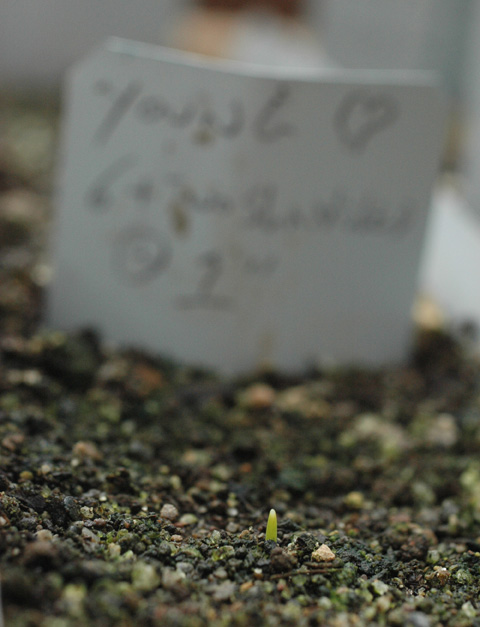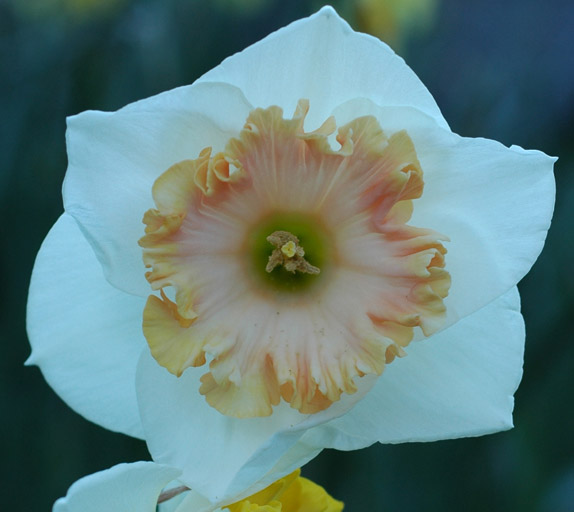
Fertilize me...
Having fallen in love with a glossy catalogue photo of Young Love, a fresh yet sensuous daffodil, pollinated her stigmas with who knows what combination of mongrel pollen and then carefully collected the 8 resulting seeds from two flowers it was time to wait for fall planting time. I kept Young Love’s seeds, along with the other 60 odd seeds I collected from my sloppy daffodil pollination experiments close at hand. At first I was really excited about the seeds and left them out on the desk drying in small twisty tied bundles of spun row cover material. The material allowed the seeds to dry, but kept them from being scattered. After a while, when the hassle of having them all over my desk outweighed the fetish value of looking at them a lot, I put seeds in a special little catch all basket on the desk where I could still sort of see them. Over time I became excited about or distracted with other things and stopped thinking about my seeds. I only noticed them once in a while when I needed something else out of the basket and was like “oh yeah, awesome!” That seems just as well since I had to wait a few months before planting them. Not to worry, come fall, my excitement was renewed.
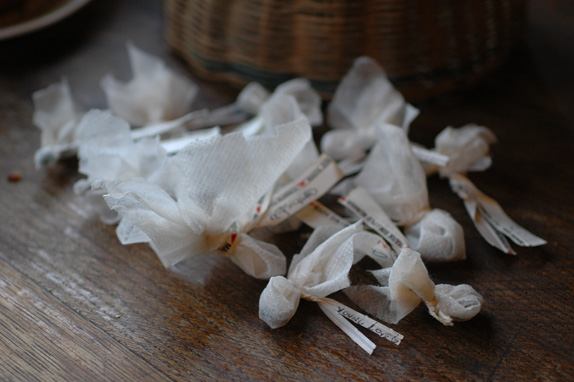
In early fall I put the seeds out in the greenhouse. I did a little reading on propagation of daffodil seeds. Over all it seemed that they would grow easily enough, although some of the methods of propagation seemed overly complicated. I opted to plant them about 1 inch deep in flats. I used a technique I sometimes favor for special seeds with is as follows:
*Fill a planting flat about half full with rich flat soil made mostly of sifted compost.
*Follow the flat mix with a 1/2 inch or less layer of sand. (could also be 50/50 sand and peat, but I generally don’t find it necessary to add peat to propagation sand, though it will hold water longer if you do. The seeds can be laid carefully just where you want them on the sand.
*Cover with more sand to the chosen seed planting depth, in my case 1 inch.
This system offers a moist but well drained environment for the seeds with plenty of opportunity for the exchange of air yet with fewer of the moulds, bacteria and critters that are found in the composty flat mix. There is a tradition of planting seeds in sand or sand and peat for germination, but they have to be transplanted out soon after sprouting up because they have no nutrients to thrive on. When the seeds in the stratified flats strike roots, they hit pay dirt very soon and are off to a good start without transplanting. Sown in the flats, labels in place and watered in, there was nothing to do but wait.
At first I was patient. But I had started some wild Camas, wild Diogenes’ Lantern, Naked Ladies’ and Tiger Lily seeds at the same time. When the Camas came up I was stoked! I had been watching them all in anticipation and was starting to wonder if they would all fail to emerge. First just one Camas seedling, then more, then the Diogenes’ Lantern began coming up. Then the Naked Ladies... then finally the Tiger Lilies.... but no Daffodils :( I began to check more frequently. I started to doubt that my methods were adequate and wondered if maybe the seeds had rotted. For all I could know, they lay under the sand bed as hollowed out shells or worse yet, shells full of putrid rotting slime that had once held hidden promise of a long life of surpassing beauty. I reminded my self that daffodils are pretty tough plants in general and that they have probably evolved to tolerate these conditions just like any other plant, if not better. They just take a long time right? Maybe I watered them too much in spite of the well drained conditions I gave them. My faith in simple propagation methods was slipping. I resisted the temptation to dig in and have a look.
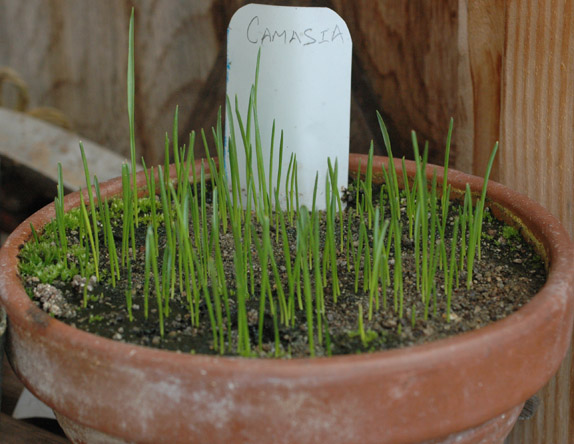
Every time I was remotely near the greenhouse I would go in and look. I had seeded some Apples too, so I had two exciting seed projects to anticipate. I scanned the surface of the sand carefully for any green tips that might be poking through. I tried viewing from different angles. I moved any suspicious lumps of sand in the case that there might be a shoot just below pushing the surface up trying to get out. I blew on the surface to remove any lose material that might be obscuring the green tip of a seedling. Then I blew harder wishing I could blow a layer of the sand off, but alas it was too wet, too compacted, it wasn’t budging. I thought about removing a thin layer of sand since small bits of moss has started to grow and lock the particles together... but that might damage the tips of any seedlings that were coming up. I thought about spraying the soil with water to remove a layer of sand, but ditto, and besides then I would be over watering and they might rot. Aaaagghhhhh!! It was like christmas when you’re a kid.
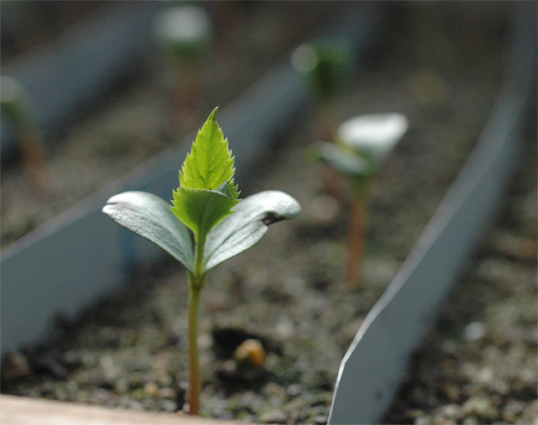
!Apples!
Finally, one day there was a green tip in an auxiliary pot of seeds! It wasn’t one I was excited about, but at least there was hope and they weren’t all dead! Now I checked even more often, sometimes three times a day. Scanning carefully... I’m not sure a day has gone by when I don’t check, but it’s been slow going. After the first one, more came up but they took their time about it. One came up every few days at the best and just one in a row of many seeds. Finally about 6 varieties were up, with no sign of life in the Young Love row. wahhhhh!!!! I was out of ideas to speed up the process so I had to be content to scrutinize the soil surface. It’s amazing how fast they come up when they do. Two nights ago, after having checked already once in the morning, there it was by the ghastly LED light of my headlamp, a tiny speck of green in front of the Young Love tag! I probably uttered some happy noises and wiggled around or something. You’d think I could rest in peace now, but no, I probably looked at them three times yesterday to check for new plants
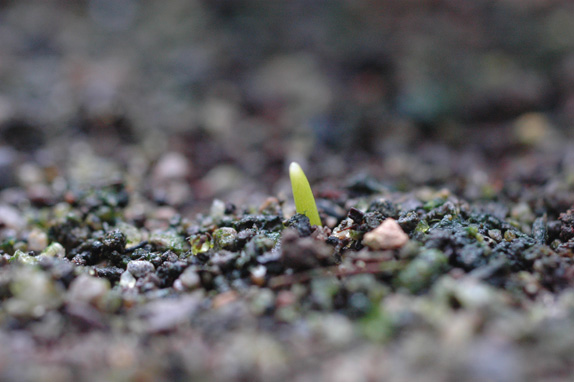
YAAAy!!!
I know, its ridiculous, But it’s nice to have something to be excited about which holds some promise for the future, even if it might be nothing more than a small population of peachy colored and probably buck toothed and lopsided flowers with unevenly split cups. I’m sort of looking forward to getting over it and just letting them grow on till they are ready for their coming out party. I will no doubt go through this process again in a few years when they approach flowering age, only worse. Spreading apart the leaves to see if there might be a flower bud tip down in the there, just enough to get a good look without breaking any leaves. For now though I will probably check them obsessively for a bit longer until excitement wears thin and enough seedlings are up for me to say that the endeavor was more or less a success, which is not the case now with 10 seedlings up out of 70. (I checked last night, make that 11:) Apparently Daffodil seeds can lie dormant for a year or two, but I’m hoping of course that mine won’t. That could really be a nail biter.
Now for some real waiting! Wow, I mean really, three to five years from seed is a long time. I’m glad I’m old enough that it doesn’t seem like an eternity. But, if I pollinate a few flowers a year and with a small amount of effort, I can have new flower varieties to evaluate every spring. I guess you’ll hear from me again when it’s time to shallowly judge Young Love’s offspring based almost solely on physical beauty. Until then, the narcissus are blooming so it’s about time to start pollinating again- Woohoo!
The earliest narcissus daffodils are already blooming here in February. If you have more than one kind of daffodil variety, why not cross pollinate a few and see what happens? Just snip off a stamen that is releasing powdery grains of pollen and rub it gently on the stigma (the little center thingy) of another variety. Repeat for a couple of days in the late morning. What better to do while drinking your coffee in the morning. If you want to keep track, tie on a tag with the name of the varieties using the convention Girl Plant X Boy Plant. Collect the seeds when the capsules begin to dry and open, but before they open all the way and drop the seeds. Let the seeds dry thoroughly before storing in a dry cool place.
